





Hanne Darboven. Am Burgberg
Book release April 2025Publisher Hatje Cantz
Editor Dietmar Rübel
Author Julia Gaisbacher
Book design, photography editor Fernando Gallegos
Graphic design Jonas Kirchner
Text Petra Lange-Berndt & Dietmar Rübel
German, English
16,2 x 23.5 cm, 240 pages, Hardcover
Funded by
Liebelt Foundation Hamburg
The Austrian Federal Chancellery
Bildrecht Wien
Academy of Fine Arts, Munich
PREVIEW
Book release April 2025
The publication concludes Julia Gaisbacher’s long-time exploration of Hanne Darboven’s Künstlerinnenhaus and at the same time continues her own work on “dream houses.” The Viennese artist’s photographs provide sensitive insights into Hanne Darboven’s studios in the south of Hamburg in Germany. The five houses on the unique estate served as Darboven’s living and working space for 40 years. To this day, the ensemble also functions as a treasury for thousands of objects and artworks. Gaisbacher’s precisely composed black-and-white photographs of the rooms, whose seemingly chaotic abundance contrasts sharply with the strict order of Darboven’s works on paper, create a compelling artistic dialog about time and space between the generations.
Hanne Darboven (1941–2009) lived and worked in Hamburg and is one of the most prominent conceptual artists of the 20th century. In the 1960s, she was among the earliest proponents of this groundbreaking international movement; she also was an attentive observer of her time and the historical and contemporary currents in politics, culture and society.
Book release April 2025
The publication concludes Julia Gaisbacher’s long-time exploration of Hanne Darboven’s Künstlerinnenhaus and at the same time continues her own work on “dream houses.” The Viennese artist’s photographs provide sensitive insights into Hanne Darboven’s studios in the south of Hamburg in Germany. The five houses on the unique estate served as Darboven’s living and working space for 40 years. To this day, the ensemble also functions as a treasury for thousands of objects and artworks. Gaisbacher’s precisely composed black-and-white photographs of the rooms, whose seemingly chaotic abundance contrasts sharply with the strict order of Darboven’s works on paper, create a compelling artistic dialog about time and space between the generations.
Hanne Darboven (1941–2009) lived and worked in Hamburg and is one of the most prominent conceptual artists of the 20th century. In the 1960s, she was among the earliest proponents of this groundbreaking international movement; she also was an attentive observer of her time and the historical and contemporary currents in politics, culture and society.
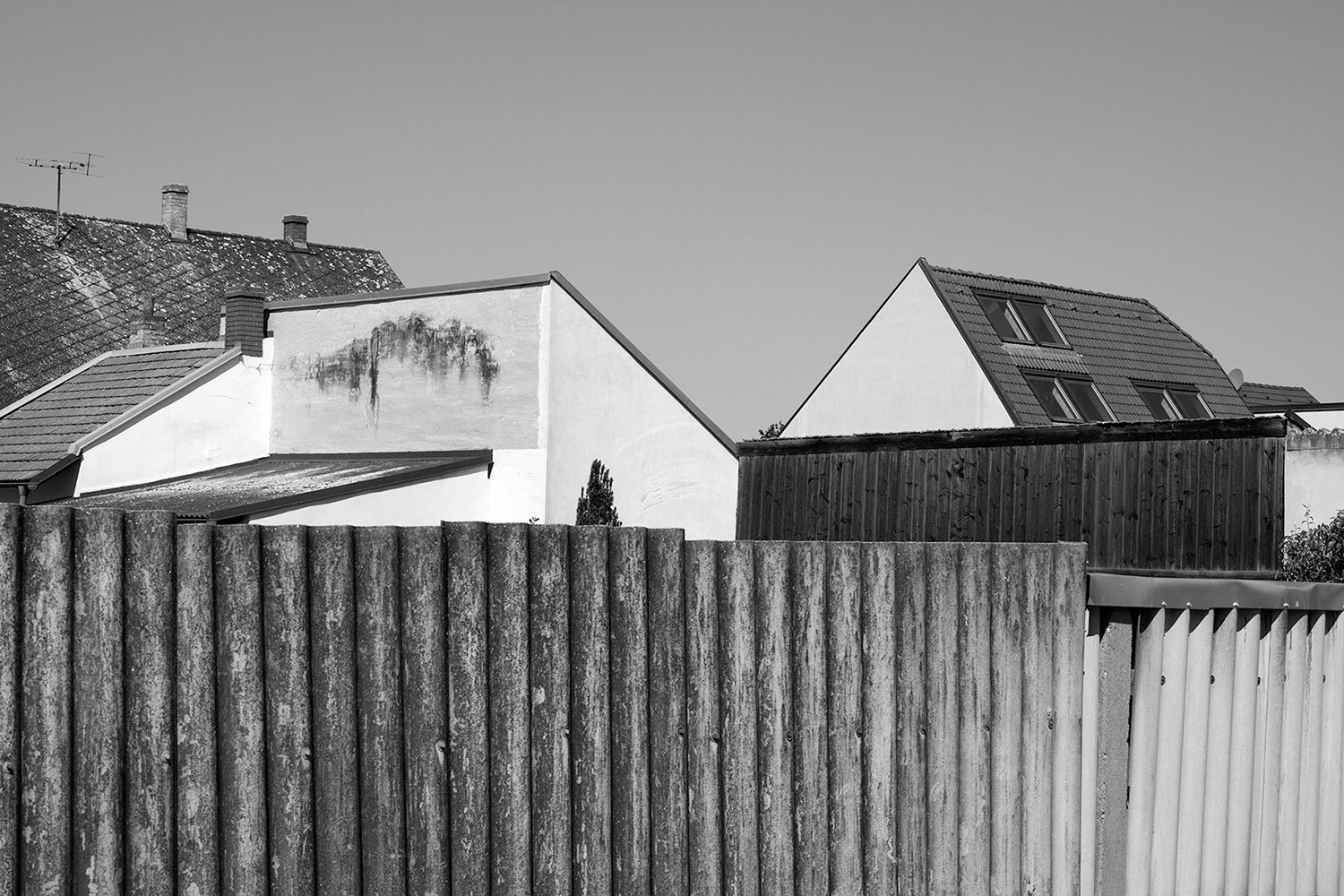
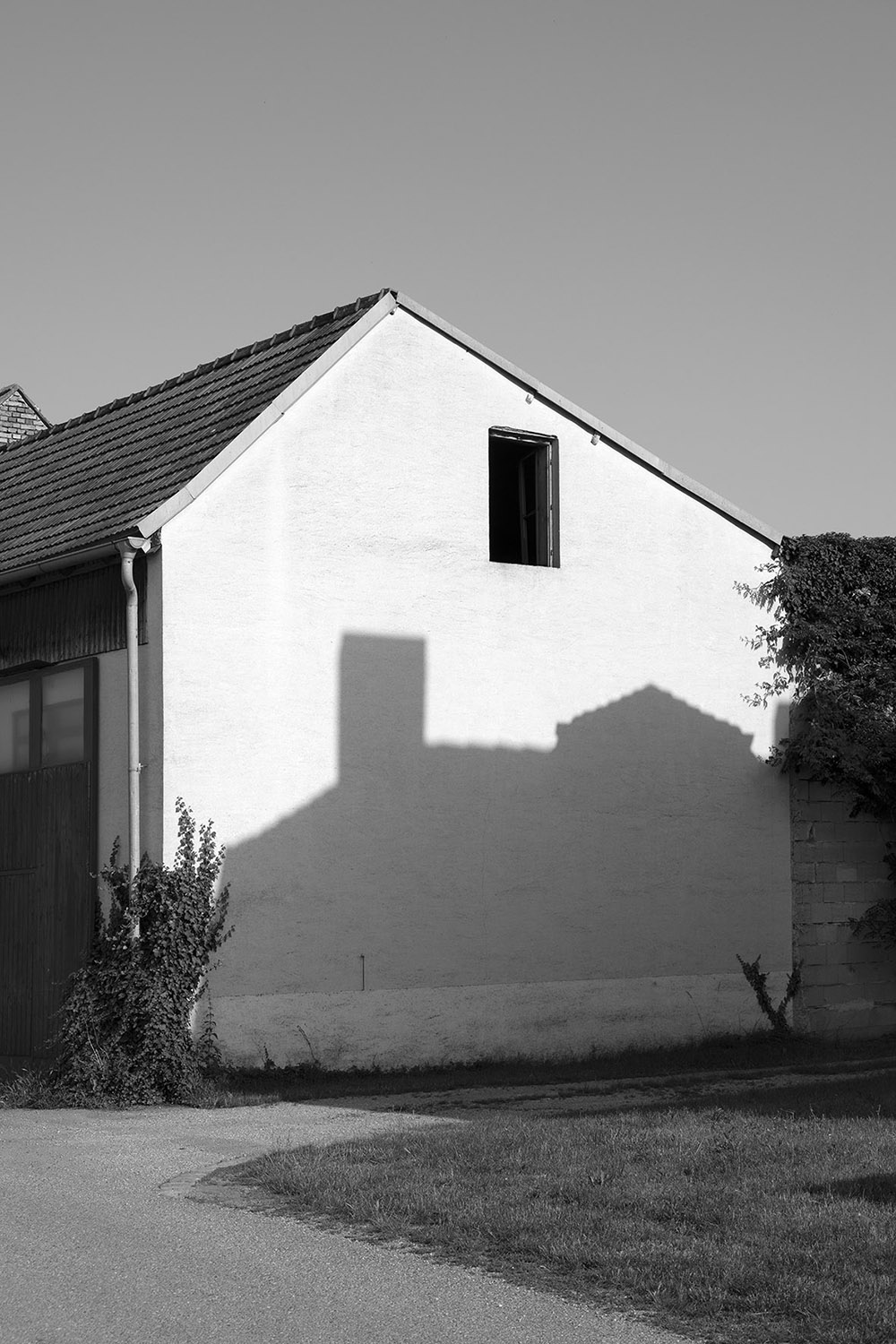
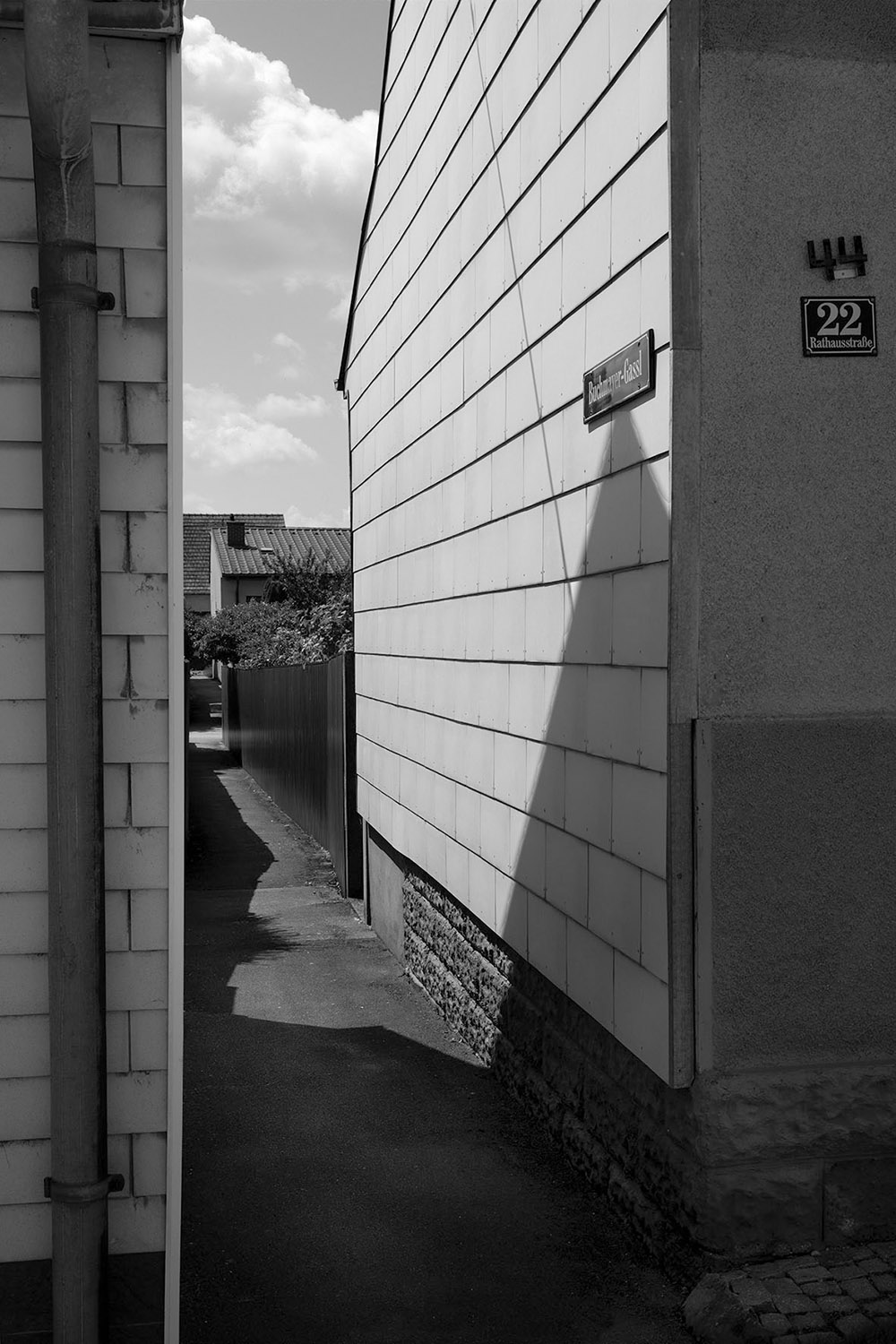
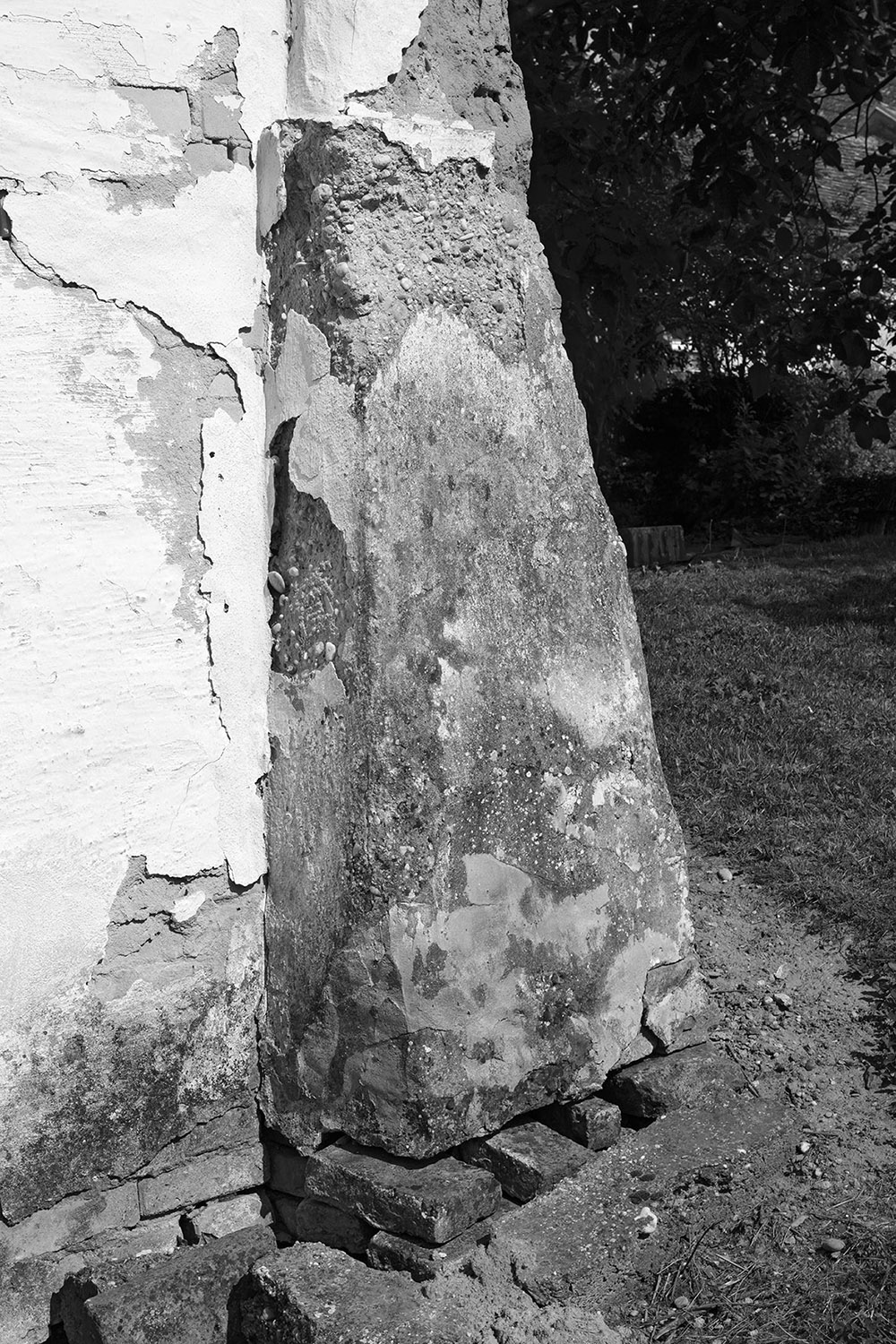
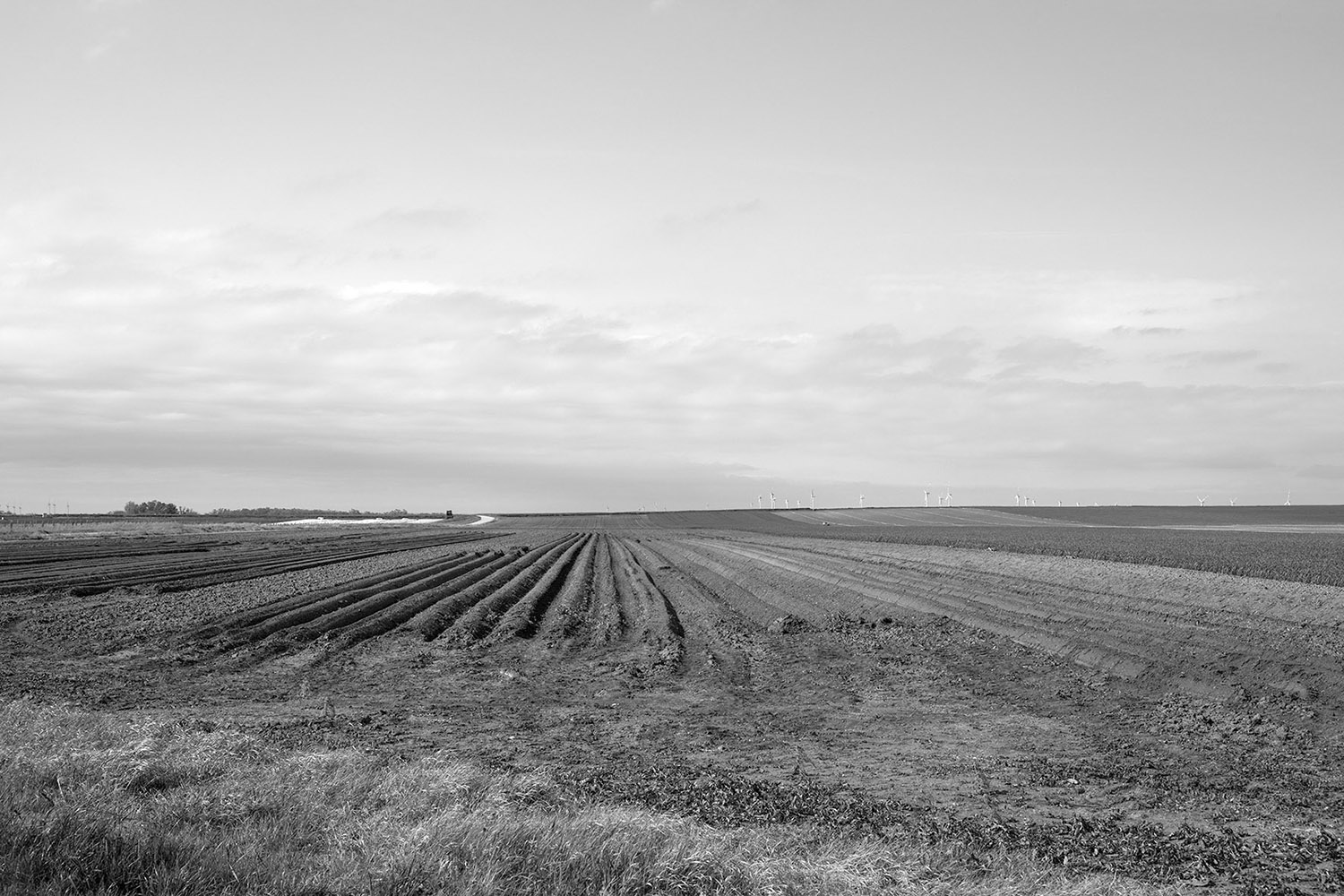
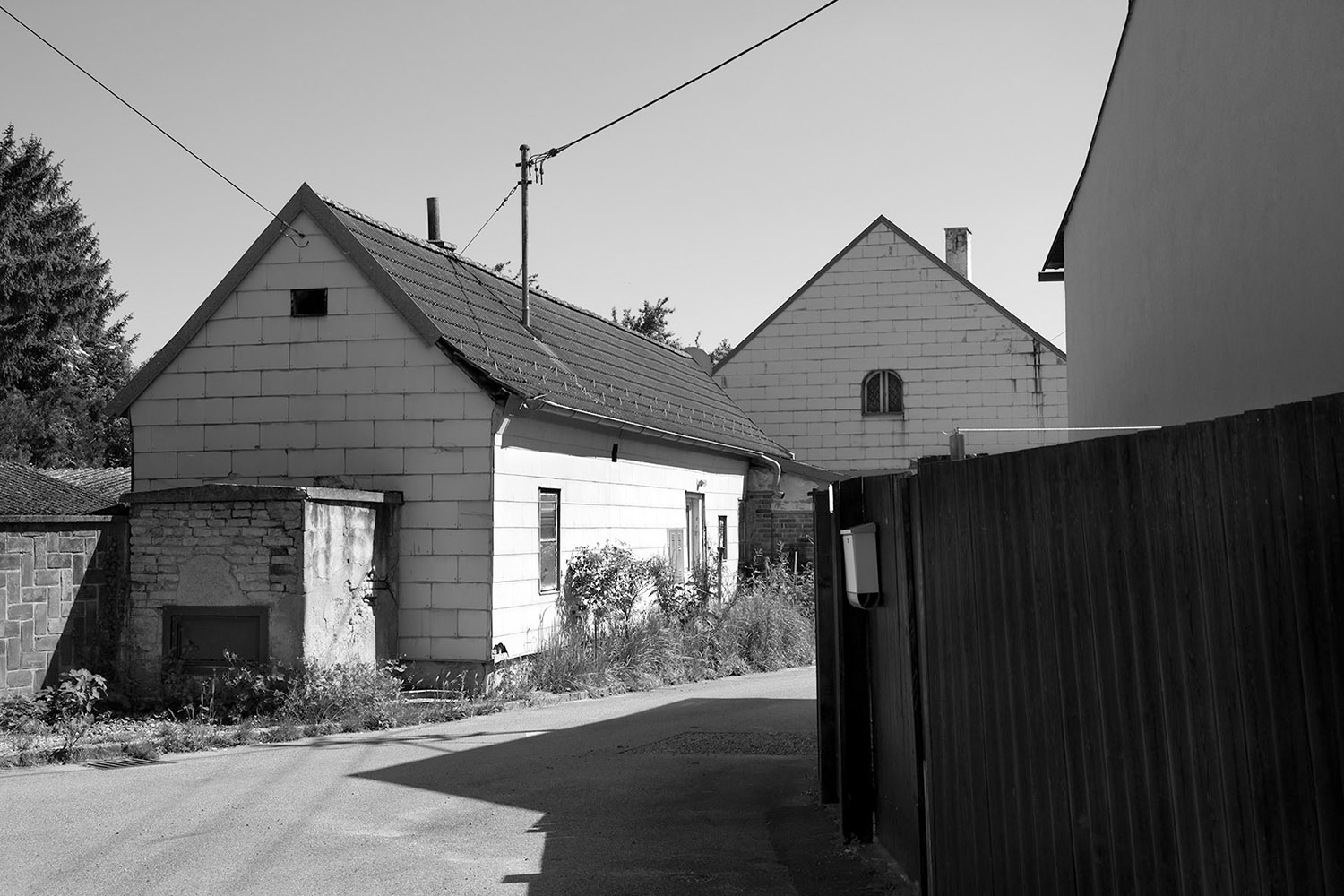
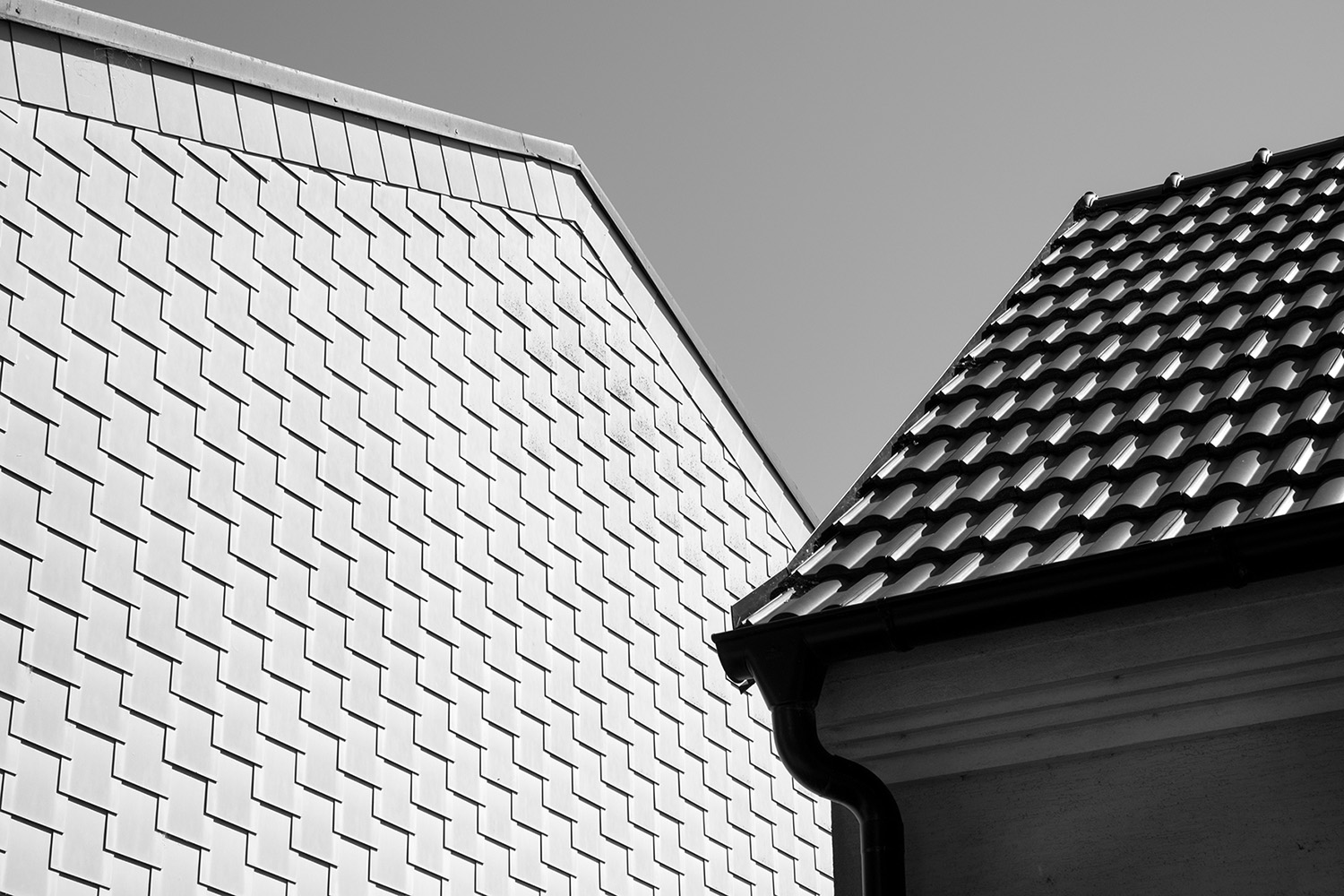




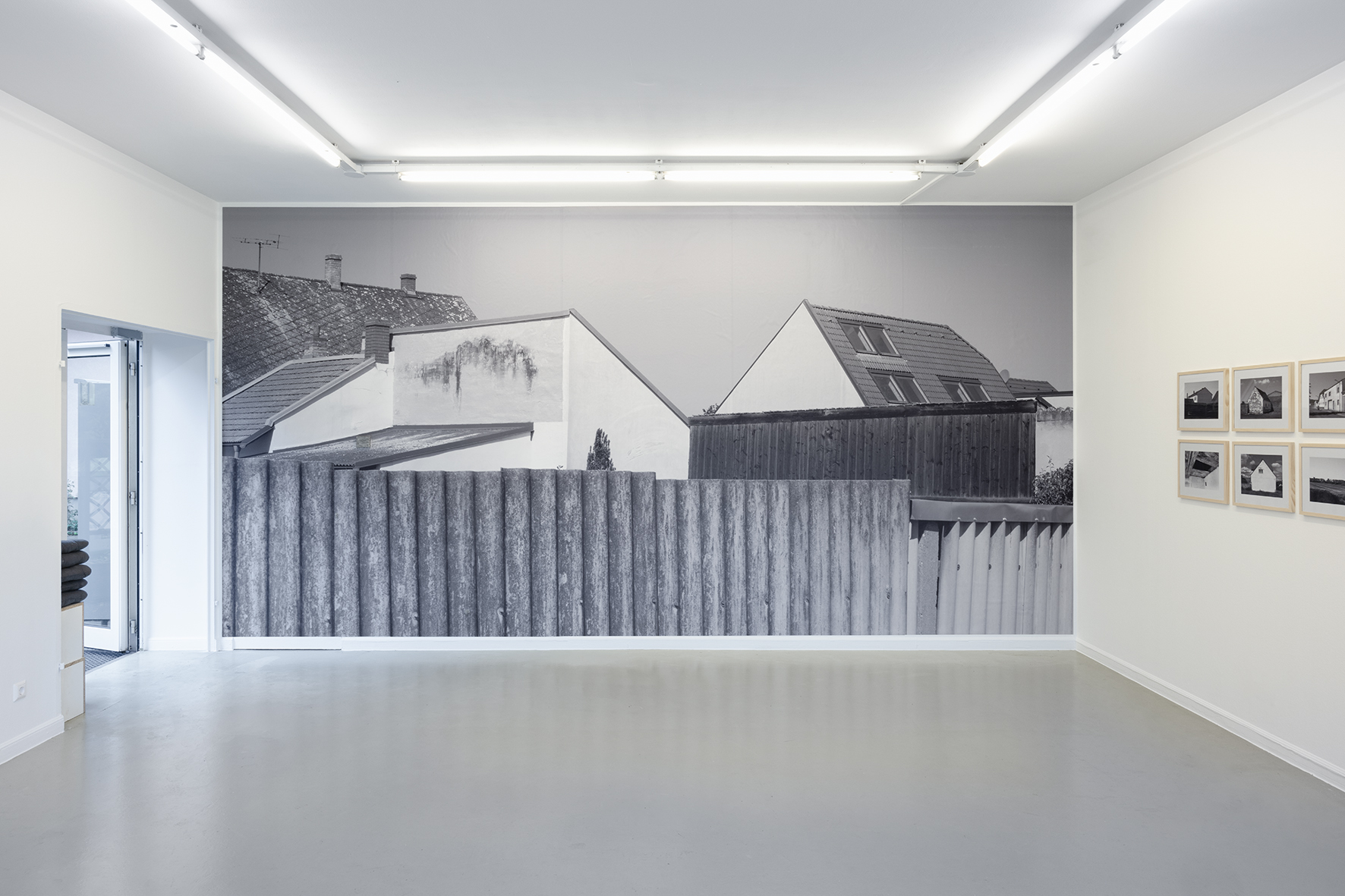

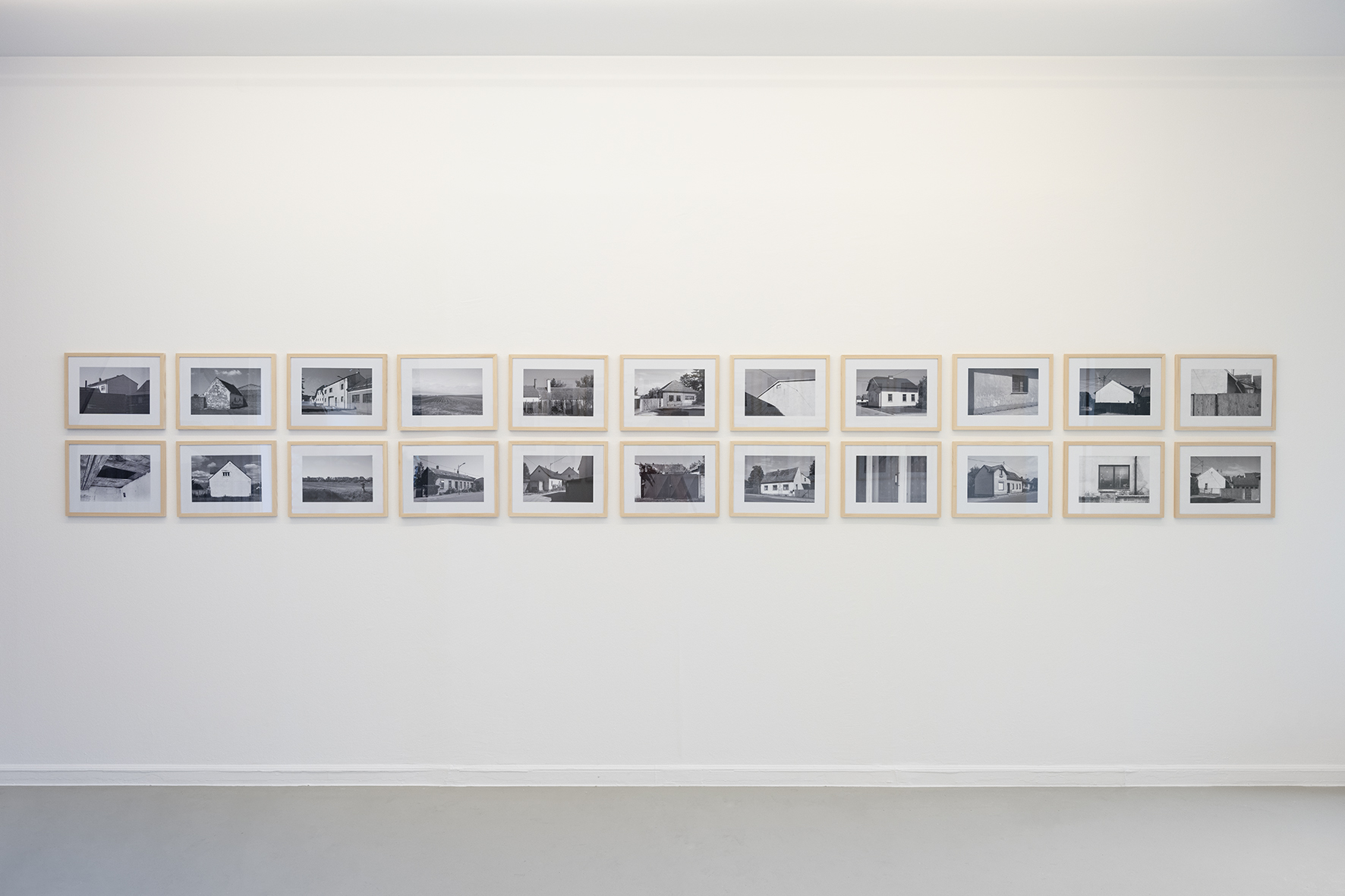
Weikendorf
202445 b/w images, each 30x40cm, framed
Wallpaper, 300x600cm
Funded by
KOER Niederösterreich
Exhibition design
in collaboration with Fernando Gallegos
Research
with the support of Robert Hanel and Gerardo Montes de Oca Valadez
Exhibition views
Julia Gaisbacher
Weikendorf deals with the changes brought about by the new global economic policies and agro-industries from the 1960s onwards and their effects on rural areas and agriculture using the example of the village of Weikendorf in Lower Austria. Around fifty years later, Julia Gaisbacher asks to what extent the changes can still be seen in the townscape today and what traces of that time remain.
Historical images from the Weikendorf archive, extensive conversations, and walks through the community form the starting point for how the various changes were captured.
Gaisbacher's photographs from Weikendorf are a mixture of documentation and a particular artistic view, which, as framed moments, tell a lot about temporality and change.
Please find images from the exhibition opening here
Historical images from the Weikendorf archive, extensive conversations, and walks through the community form the starting point for how the various changes were captured.
Gaisbacher's photographs from Weikendorf are a mixture of documentation and a particular artistic view, which, as framed moments, tell a lot about temporality and change.
Please find images from the exhibition opening here




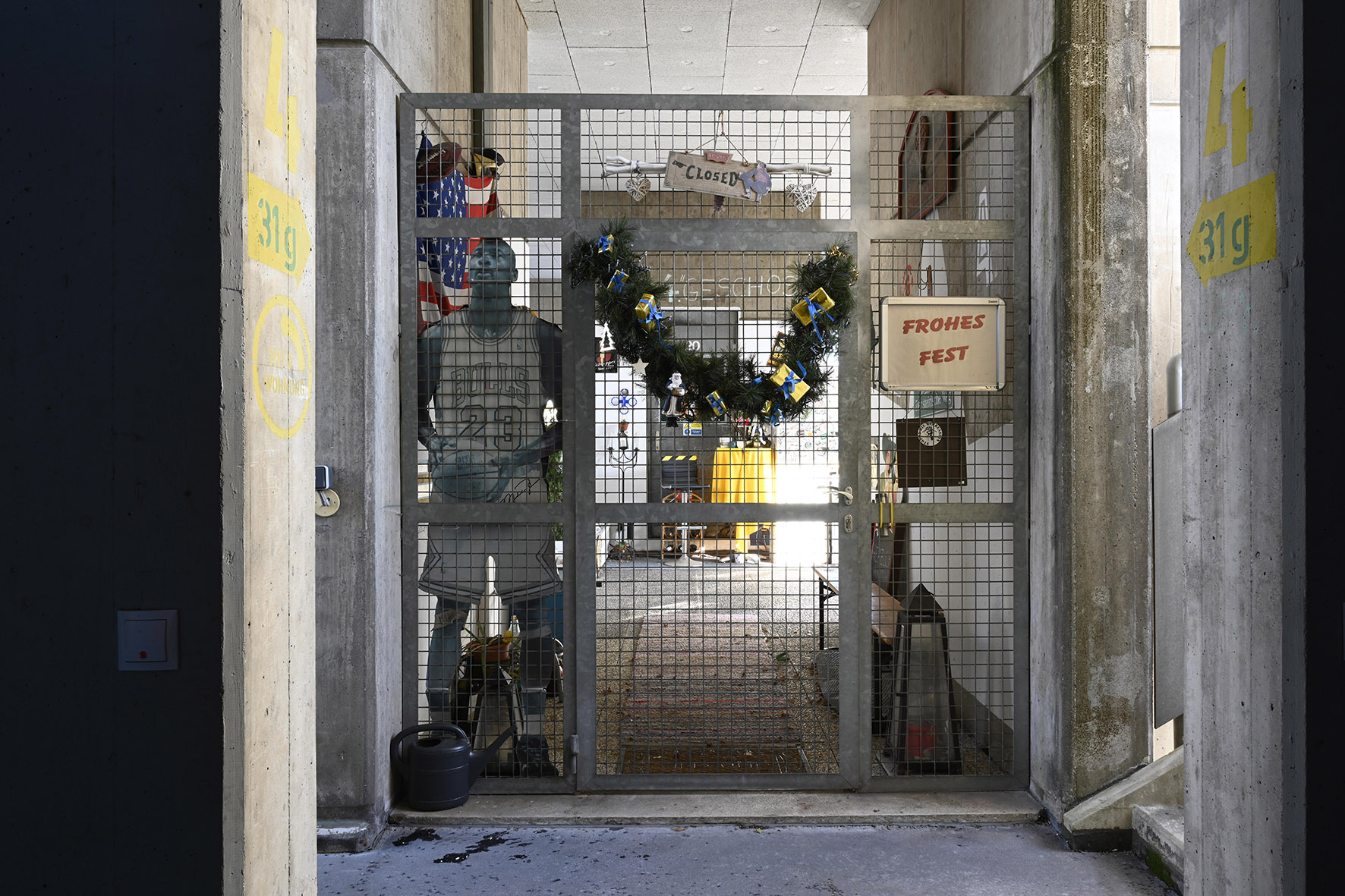
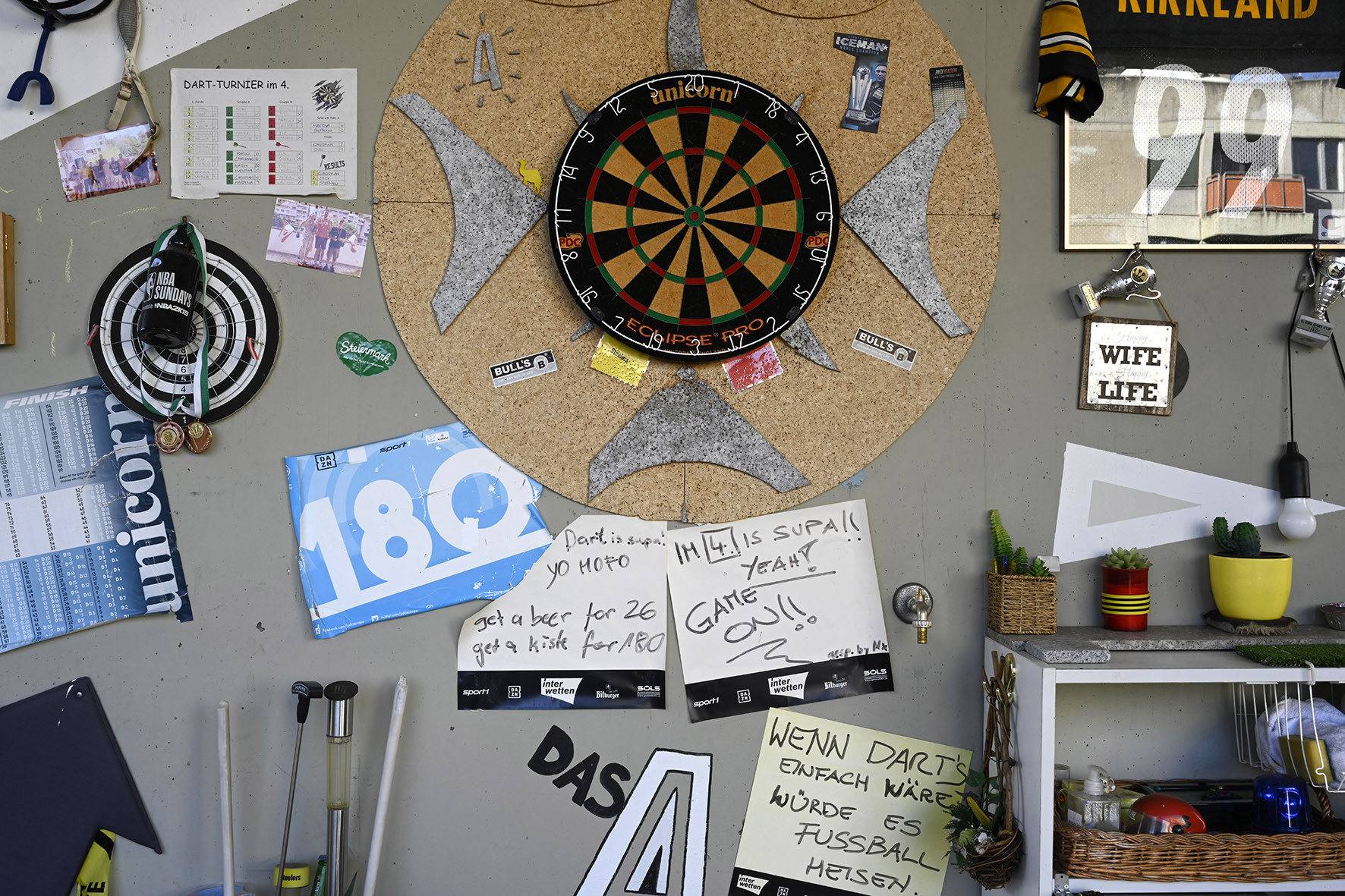



Im Zentrum
2023-2025Funded by
Kunstraum Steiermark scholarship by the Province of Styria (AT), 2023-2024 The Austrian Federal Chancellery The City of Graz
I grew up in the 1980s in the brutalist “Terrassenhaussiedlung” (terraced housing estate) in Graz planned by the architects Werkgruppe Graz. The idea of housing with its many communal areas influenced me as a child and helped shape my artistic interest in urban development and housing.
Im Zentrum (working title) is part of a long-term project and deepens my artistic examination of the housing estate in Graz. I am interested in the question of how the (real) utopian architecture of the 1960s is used today and whether the architects' vision has been realized by the residents.
I will photographically juxtapose my family's personal stories with the changes to the site. The aim of the project is to create an artistic photographic work from current photos and private archive images that can be presented both in exhibitions and in book form.
As part of the long-term project, I am interested in the directions in which similar housing projects in other countries, such as Split 3 in Split, Croatia have developed due to the respective political situation. What are the ways of living and dealing with the buildings today under the different political conditions? Which generation of residents lives in the apartments today and what issues concern them?
Im Zentrum (working title) is part of a long-term project and deepens my artistic examination of the housing estate in Graz. I am interested in the question of how the (real) utopian architecture of the 1960s is used today and whether the architects' vision has been realized by the residents.
I will photographically juxtapose my family's personal stories with the changes to the site. The aim of the project is to create an artistic photographic work from current photos and private archive images that can be presented both in exhibitions and in book form.
As part of the long-term project, I am interested in the directions in which similar housing projects in other countries, such as Split 3 in Split, Croatia have developed due to the respective political situation. What are the ways of living and dealing with the buildings today under the different political conditions? Which generation of residents lives in the apartments today and what issues concern them?

A Sign of the Time (working title)
2024–2025Commissioned by the Province of Styria as part of the revitalisation of Graz Castle, Graz (AT)
Patina, arisen by the wear and tear of time and also smaller, often inconspicuous details such as ornaments, cracks or traces of paint that indicate past renovations, are the focus of Julia Gaisbacher's photographic project "A Sign of the Time" about Graz Castle. The work examines the traces and signs of past eras that are still visible in the building today, thus opening a dialogue between the past and the present.
Julia Gaisbacher uses the properties of the medium of photography to capture the light that falls on the architectural structures, modelling spaces, surfaces and shapes. The interplay of light, material, and time not only creates documentary images of the architecture of Graz Castle but also creates visual compositions that invite the viewer to reflect on the effect of architecture across eras.
Julia Gaisbacher uses the properties of the medium of photography to capture the light that falls on the architectural structures, modelling spaces, surfaces and shapes. The interplay of light, material, and time not only creates documentary images of the architecture of Graz Castle but also creates visual compositions that invite the viewer to reflect on the effect of architecture across eras.
